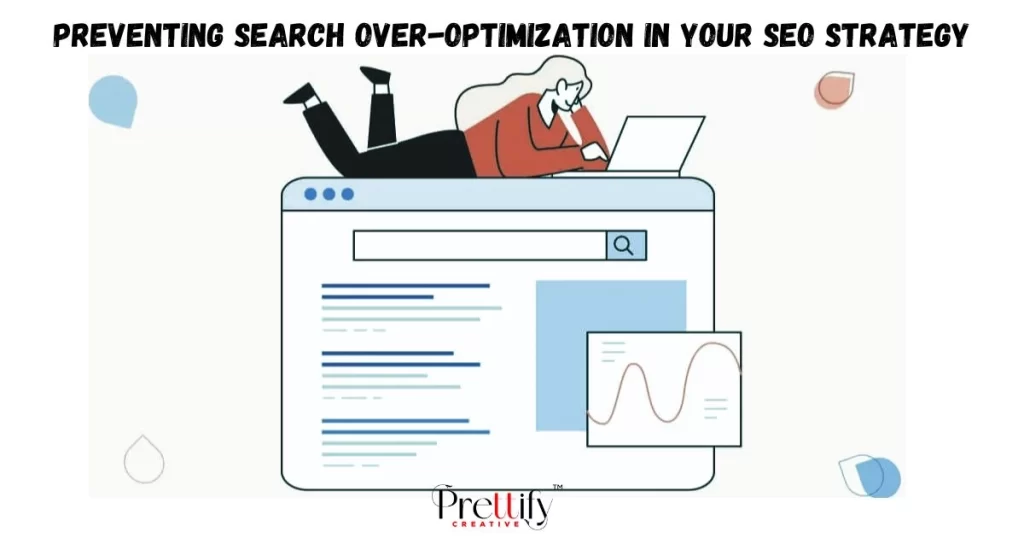Preventing Search Over-Optimization in Your SEO Strategy
admin
April 22, 2024
SEO
admin
April 22, 2024

In today’s digital landscape, mastering search engine optimization (SEO) is crucial for businesses striving to enhance their online presence and drive growth. However, the allure of SEO success can sometimes lead to over-optimization, which can have detrimental effects on your website’s performance and user experience. In this guide, we’ll explore the dangers of search over-optimization and provide actionable strategies to help you strike the right balance in your SEO efforts.
Did you know that over 70% of businesses have faced negative consequences due to over-optimization? This alarming statistic underscores the importance of addressing the impact of over-optimization in your SEO strategy. Over-optimization not only affects your search engine rankings but also diminishes the user experience, leading to decreased website traffic and conversions.
Over-optimization can have several adverse effects on your website and SEO efforts:
1. Search Engine Confusion: Excessive optimization can confuse search engines and weaken your website’s relevance. Google’s algorithms are adept at detecting unnatural keyword stuffing and manipulative tactics, which can result in lower rankings.
2. Poor User Experience: Focusing solely on SEO over-optimization can compromise the user experience. Visitors may be deterred by keyword-stuffed content that lacks readability and value, leading to higher bounce rates and lower engagement.
3. Risk of Penalties: Engaging in over-optimization practices puts your website at risk of penalties from search engines. Google and other search engines penalize websites that violate their guidelines, leading to lower rankings or even removal from search results.
To prevent search over-optimization and maintain a healthy online presence, consider implementing the following strategies:
1. Focus on User Intent: Shift your focus from pleasing search engines to providing value to users. Create high-quality, informative content that addresses the needs and interests of your audience. Avoid keyword stuffing and prioritize readability and relevance.
2. Diversify Keyword Usage: Broaden your keyword horizons and incorporate long-tail keywords and semantic variations into your content strategy. Focus on capturing specific search queries and attracting highly targeted traffic without risking over-optimization.
3. Natural Link Building: Earn backlinks organically from reputable sources by creating valuable, shareable content and building relationships with influencers in your industry. Avoid manipulative tactics such as paid-link schemes and excessive link building.
4. Monitor Performance Regularly: Continuously monitor your search engine rankings and website traffic to track the effectiveness of your SEO efforts. Analyze performance data and adjust your strategy as needed to maintain a competitive edge and ensure long-term success.
By implementing these strategies and avoiding common pitfalls such as keyword stuffing and excessive link building, you can prevent search over-optimization and position your website for sustainable growth. Remember to prioritize user experience and compliance with best practices to achieve lasting success in your SEO endeavors.
Frequently asked questions:
Search over-optimization refers to the practice of excessively optimizing a website or its content for search engines, often resulting in penalties from search engines like Google. It’s important to prevent over-optimization as it can harm your website’s rankings, reputation, and user experience, leading to decreased visibility and traffic.
Prettify Creative Tip: Design visually captivating graphics that illustrate the concept of search over-optimization, such as a scale tipping towards a penalty symbolized by a search engine algorithm update. Use vibrant colors and engaging imagery to convey the importance of maintaining a balanced approach to SEO.
Common signs of search over-optimization include keyword stuffing, excessive use of exact match anchor text in backlinks, poor user experience due to repetitive or low-quality content, and unnatural link building practices. These practices can trigger algorithmic penalties and negatively impact your website’s performance in search results.
Prettify Creative Tip: Create visually stunning infographics or illustrations that highlight the common signs of search over-optimization in an SEO strategy, such as icons representing keyword stuffing, unnatural link building, and penalties from search engines. Use icons, illustrations, and colorful visuals to convey the risks associated with over-optimization.
To prevent search over-optimization in your SEO strategy, focus on creating high-quality, user-focused content that provides value and relevance to your audience, use natural and varied anchor text in backlinks, avoid excessive keyword repetition, and prioritize user experience and engagement metrics over search engine rankings. Additionally, stay updated on search engine guidelines and algorithm changes to ensure compliance with best practices.
Prettify Creative Tip: Develop visually captivating graphics that showcase strategies for preventing search over-optimization in an SEO strategy, such as a roadmap with key milestones for content creation, link building, and performance monitoring. Use icons, illustrations, and step-by-step visuals to convey the principles of balanced optimization.
To assess and mitigate the risk of search over-optimization in your existing SEO strategy, conduct a comprehensive audit of your website’s content, backlink profile, and optimization techniques, identify areas of concern or potential violations of search engine guidelines, and take corrective actions such as removing low-quality backlinks, optimizing content for relevance and user intent, and diversifying anchor text and keywords.
Prettify Creative Tip: Design visually appealing graphics that illustrate the process of assessing and mitigating the risk of search over-optimization in an existing SEO strategy, such as a checklist with checkboxes representing audit tasks and corrective actions. Use icons, illustrations, and visual metaphors to convey the importance of proactive optimization and risk management.
WhatsApp us